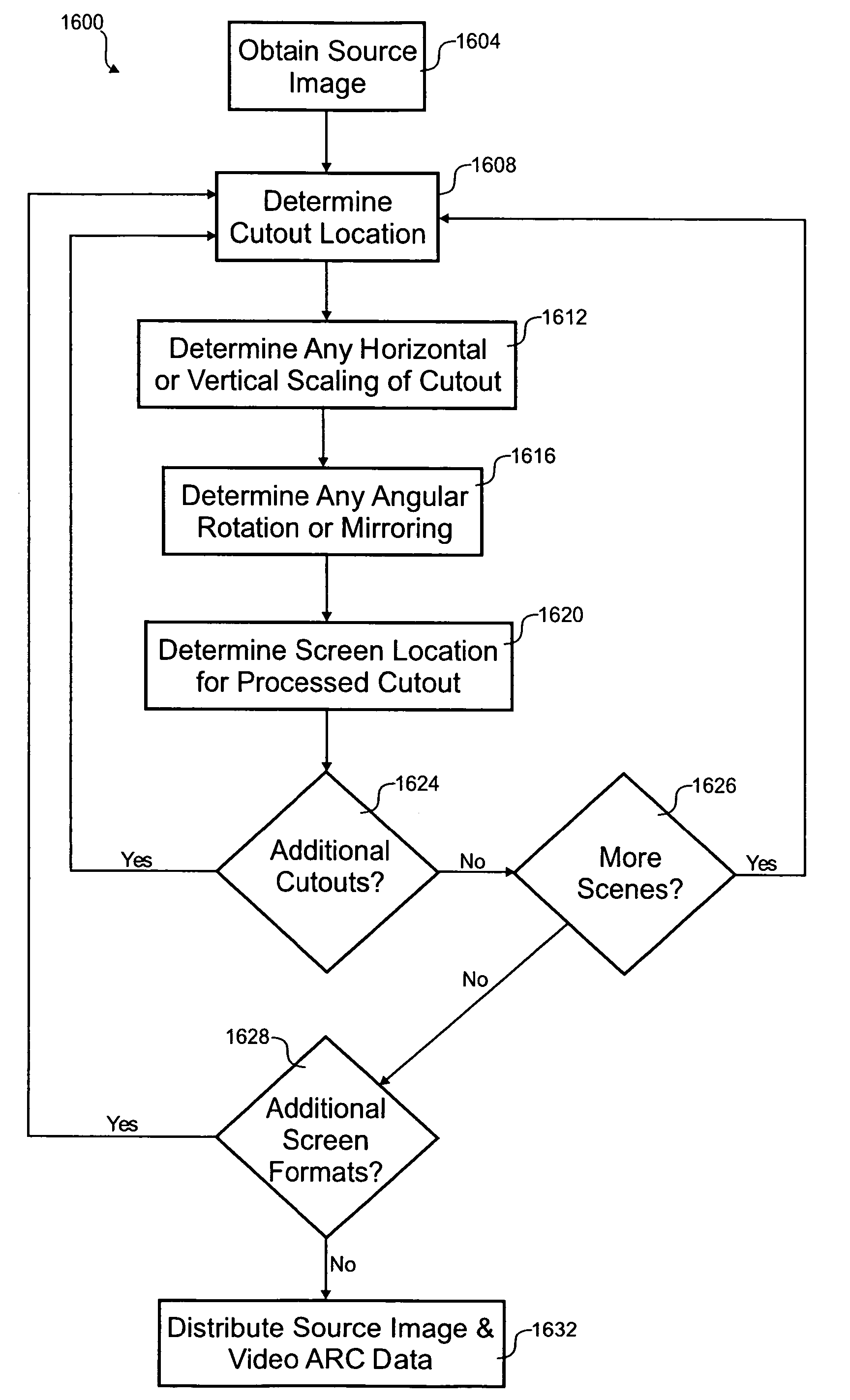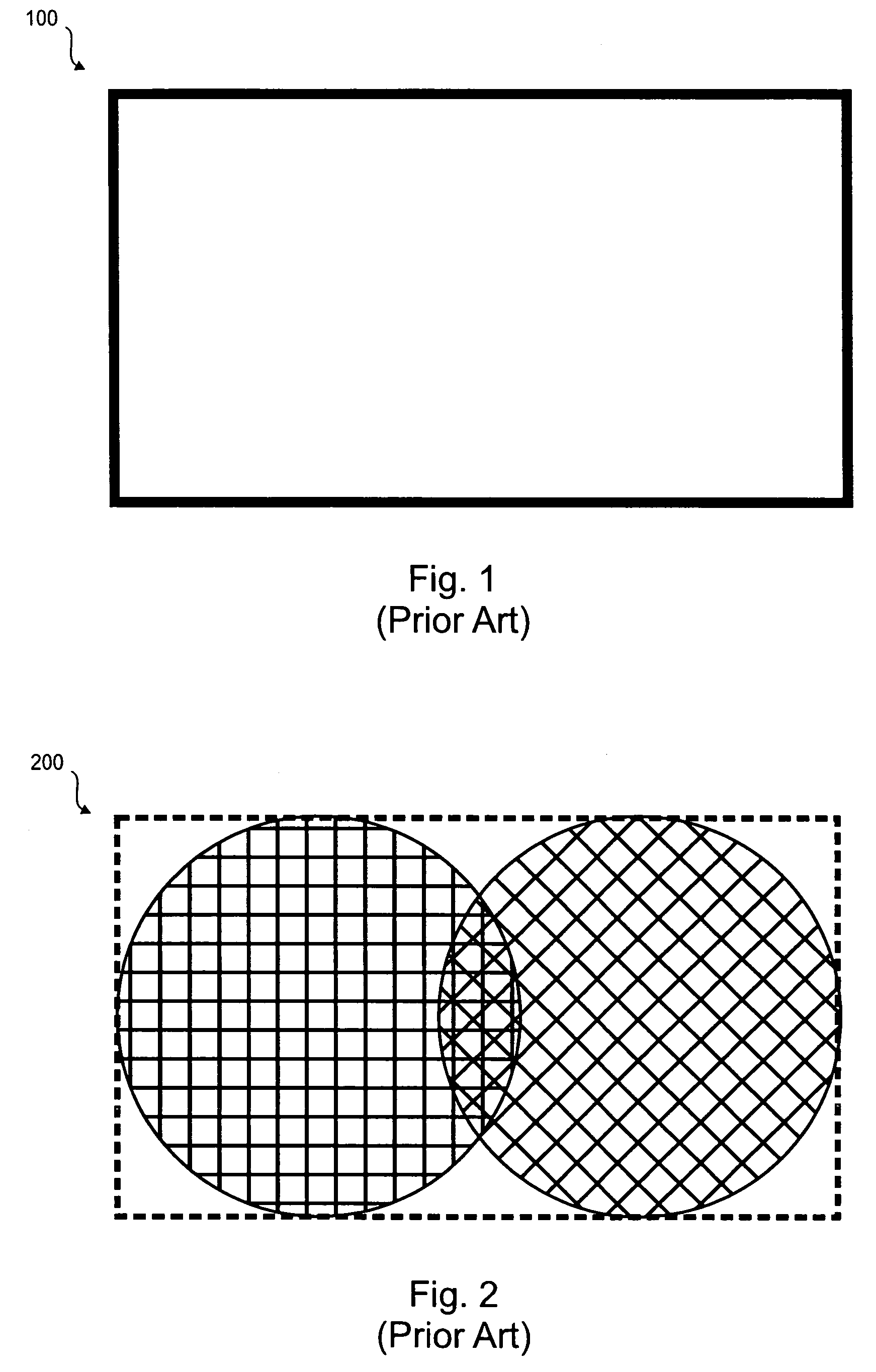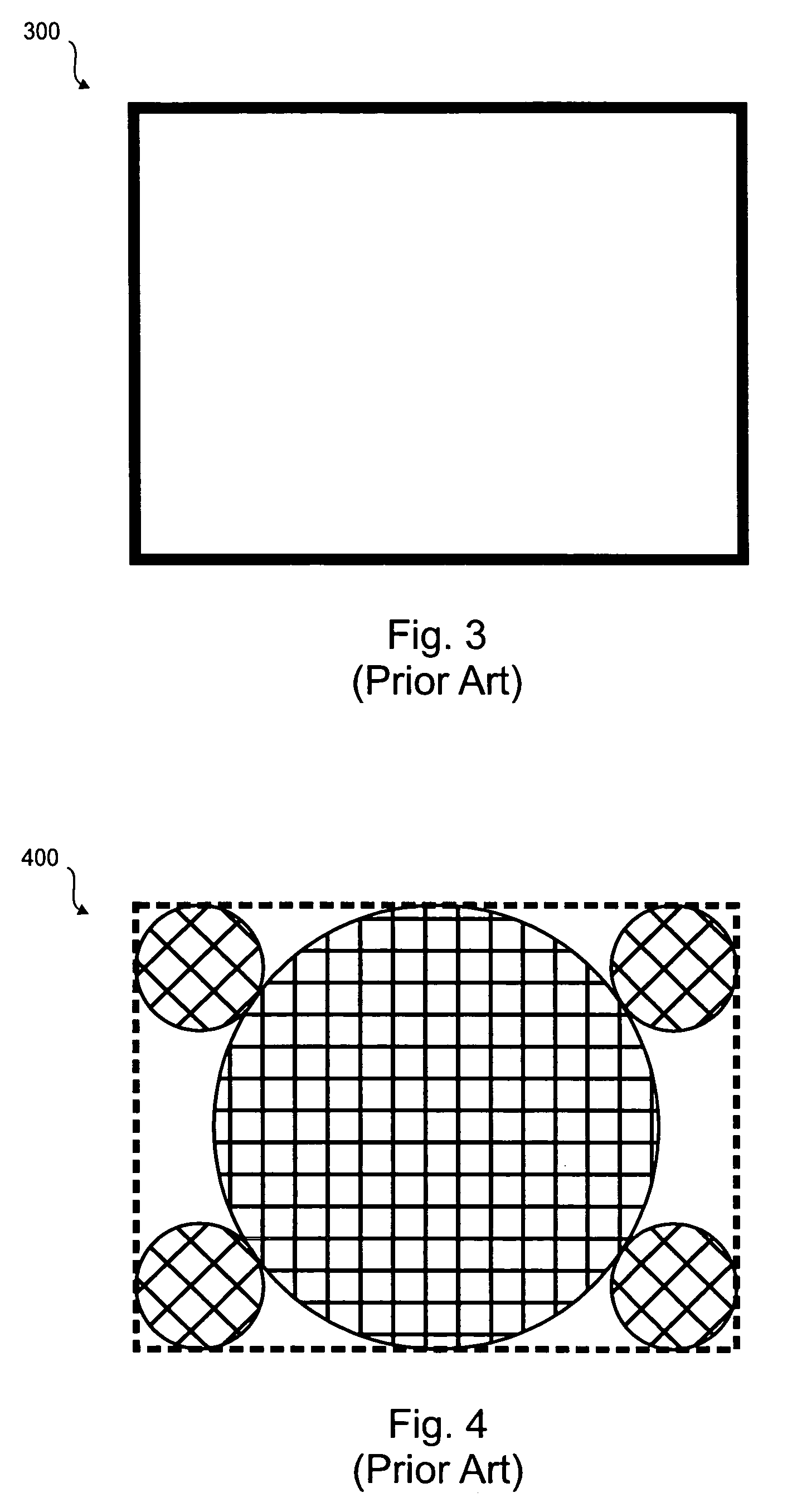Video aspect ratio manipulation
a technology of aspect ratio and video, applied in the field of video systems, can solve problems such as the problem of aspect ratio, consumer dissatisfaction, and the feeling of being short-changed by most consumers
- Summary
- Abstract
- Description
- Claims
- Application Information
AI Technical Summary
Problems solved by technology
Method used
Image
Examples
embodiment 1000
[0049]With reference to FIG. 10, a diagram of an embodiment 1000 of the 16:9 aspect ratio image 200 is shown with an 4:3 aspect ratio aperture or cutout 1012 overlaid thereon. The video image 200 is received in a 16:9 aspect ratio, but then processed by the video converter 920 to only display a portion corresponding to the 4:3 aperture 1012. A horizontal position 1008 is an offset of the right edge of the 4:3 aperture from a vertical centerline 1004 of the 16:9 image. This horizontal position 1008 varies to capture the best positioning of the 4:3 aperture. Changes in the horizontal position 1008 are communicated to the video converter 920.
[0050]The position of the 4:3 aspect ratio aperture 1012 could be chosen by the director, a technician or desired automatically. In one embodiment, a computer compares two versions of the program having different aspect ratios to determine how the movement of the aperture was chosen. Often programs are available on DVD or to content providers in tw...
embodiment 1100
[0052]Referring next to FIG. 11, a diagram of an embodiment 1100 of the 4:3 aspect ratio image 400 with an 16:9 aspect ratio aperture 1112 is shown. A vertical position 1108 indicates the variance of the bottom of the 16:9 aperture 1112 from a horizontal centerline 1104. Although this embodiment only has one degree of freedom for the aperture, other embodiments could also allow specifying the horizontal position, scaling, angular rotation, any mirroring, image correction, aperture size, scaling algorithm, and / or other video processing to be performed by the video converter 920.
[0053]In one embodiment, a single 16:9 aspect video image has multiple video streams. For example, different camera angles for a sports program may be included. The user may be able to specify to the video converter which video stream to display by moving an aperture through the received video image. If the user did not change the selection, the video ARC data would be used to move the aperture between the var...
embodiment 1300
[0055]Referring next to FIG. 13, a diagram showing an embodiment 1300 of the 4:3 aspect ratio image 400 with a first aperture and a second aperture 1308-1, 1308-2 overlaid. The two apertures 1308 are separately specified and manipulated to produce a 16:9 image that is presented on the video display 932. In this example, the first aperture 1308-1 is taller than the second aperture 1308-2. A first vertical position 1108-1 is specified for the bottom edge of the first aperture 1308-1 and a second vertical position 1108-2 is specified for the bottom edge of the second aperture 1308-2.
[0056]To reformulate the presented video image, the first and second apertures 1308 are processed and stitched together. In this example, the received 4:3 video image 400 is for a news channels which uses a talking head and graphics in the first aperture 1308-1 and a barker in the second aperture 1308-2 at the bottom of the screen. The first aperture 1308-1 is selected such that any important portions of th...
PUM
 Login to View More
Login to View More Abstract
Description
Claims
Application Information
 Login to View More
Login to View More - R&D
- Intellectual Property
- Life Sciences
- Materials
- Tech Scout
- Unparalleled Data Quality
- Higher Quality Content
- 60% Fewer Hallucinations
Browse by: Latest US Patents, China's latest patents, Technical Efficacy Thesaurus, Application Domain, Technology Topic, Popular Technical Reports.
© 2025 PatSnap. All rights reserved.Legal|Privacy policy|Modern Slavery Act Transparency Statement|Sitemap|About US| Contact US: help@patsnap.com



